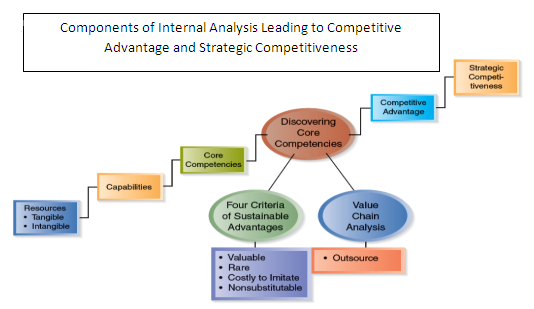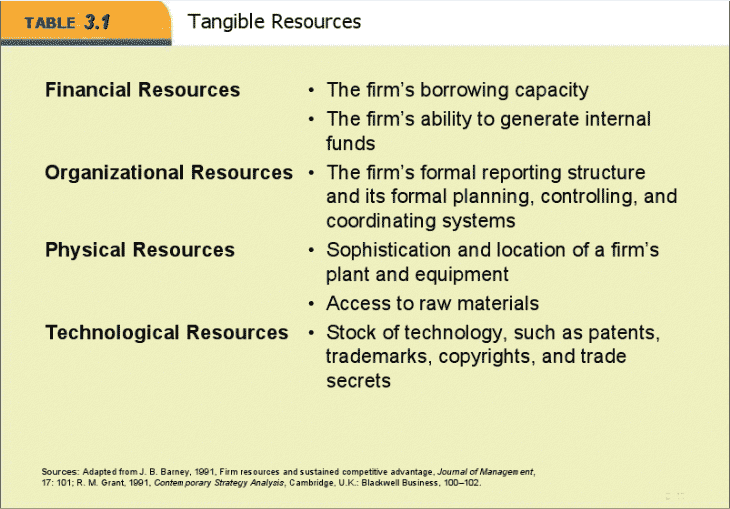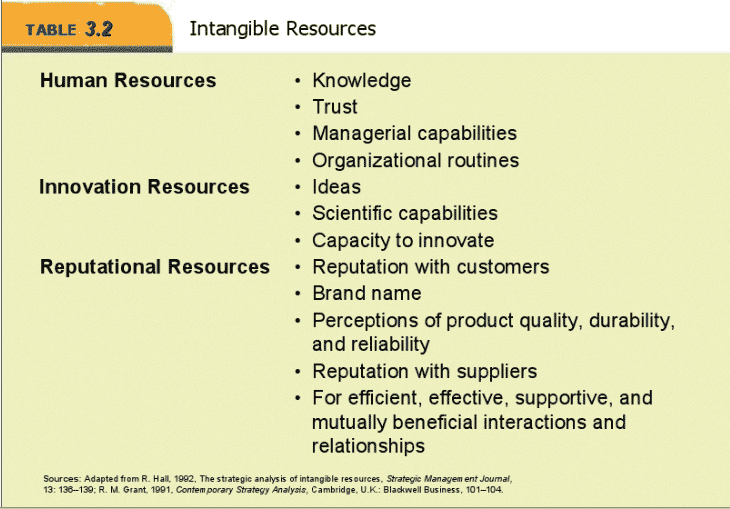Achieving a lasting and true differentiation may be difficult for many of you because your competitors may have the acess to the same raw materials and other factors inputs as you have. In such case what will set you apart is your experience and expertise.
 Core competencies are the resources and capabilities that combine to become the source of a company’s competitive advantage. It is a deep proficiency that enables you to deliver unique value to your chosen customers due to its embodying an organization's
collective learning, particularly of how to coordinate diverse
production skills and integrate multiple technologies. Such a Core
Competency creates sustainable competitive advantage for a company and
helps it branch into a wide variety of related markets. Core
Competencies also contribute substantially to the benefits a company's
products offer customers.
Core competencies are the resources and capabilities that combine to become the source of a company’s competitive advantage. It is a deep proficiency that enables you to deliver unique value to your chosen customers due to its embodying an organization's
collective learning, particularly of how to coordinate diverse
production skills and integrate multiple technologies. Such a Core
Competency creates sustainable competitive advantage for a company and
helps it branch into a wide variety of related markets. Core
Competencies also contribute substantially to the benefits a company's
products offer customers.
The litmus test of a Core Competency is VRIO
Capabilities result from the integration and interaction of specific resources to achieve a desired end state…and often involve a company’s human resource – your people – to mix the right resources.
Core competencies are the resources and capabilities that combine to become the source of a company’s competitive advantage…usually activities that add unique value to the goods and services a company sells. These competencies represent what your company typically excels at…the areas where you outperform competitors.
How do you go about discovering your core competencies?
To develop Core Competencies a company must:
Another tip when looking at your strengths: Think about them in relation to your competitors. For example, if all of your competitors provide high quality products, then a high quality production process is not strength in your organization's market, it's a necessity.
Finally, here are four criteria – and they are a challenge – that will help you judge the competencies leading to competitive advantage:
 Core competencies are the resources and capabilities that combine to become the source of a company’s competitive advantage. It is a deep proficiency that enables you to deliver unique value to your chosen customers due to its embodying an organization's
collective learning, particularly of how to coordinate diverse
production skills and integrate multiple technologies. Such a Core
Competency creates sustainable competitive advantage for a company and
helps it branch into a wide variety of related markets. Core
Competencies also contribute substantially to the benefits a company's
products offer customers.
Core competencies are the resources and capabilities that combine to become the source of a company’s competitive advantage. It is a deep proficiency that enables you to deliver unique value to your chosen customers due to its embodying an organization's
collective learning, particularly of how to coordinate diverse
production skills and integrate multiple technologies. Such a Core
Competency creates sustainable competitive advantage for a company and
helps it branch into a wide variety of related markets. Core
Competencies also contribute substantially to the benefits a company's
products offer customers.The litmus test of a Core Competency is VRIO
- The Question of Value: "Is the firm able to exploit an opportunity or neutralize an external threat with the resource/capability?"
- The Question of Rarity: "Is control of the resource/capability in the hands of a relative few?"
- The Question of Imitability: "Is it difficult to imitate, and will there be significant cost disadvantage to a firm trying to obtain, develop, or duplicate the resource/capability?"
- The Question of Organization: "Is the firm organized, ready, and able to exploit the resource/capability?"
Tangible resources -- combined with intangible
resources – are components to create capabilities…which can be
structured to become core competencies.
Capabilities result from the integration and interaction of specific resources to achieve a desired end state…and often involve a company’s human resource – your people – to mix the right resources.
Core competencies are the resources and capabilities that combine to become the source of a company’s competitive advantage…usually activities that add unique value to the goods and services a company sells. These competencies represent what your company typically excels at…the areas where you outperform competitors.
How do you go about discovering your core competencies?
To develop Core Competencies a company must:
- Isolate its key abilities and hone them into organization-wide strengths;
- Compare itself with other companies with the same skills, to ensure that it is developing unique capabilities;
- Develop an understanding of what capabilities its customers truly value, and invest accordingly to develop and sustain valued strengths;
- Create an organizational road map that sets goals for competence building;
- Pursue alliances, acquisitions and licensing arrangements that will further build the organization's strengths in core areas;
- Encourage communication and involvement in core capability development across the organization;
- Preserve core strengths even as management expands and redefines the business;
- Outsource or divest noncore capabilities to free up resources that can be used to deepen core capabilities.
It is only strength when it is recognized by a customer.
- What compliments do our customers consistently bestow on us?
- Do we usually win the jobs we quote? Why or why not?
- Are we specialists or generalists? Where do we specialize and excel?
- Do we offer turnkey solutions to customers (such as complete, usable products, or do we excel at specific component parts that fit into a larger solution)?
- Do we have existing products or services that could be re-bundled to enhance each other, or offer new solutions?
- Are our lead times competitive enough? Could we be doing more to dramatically cut down project completion time?
- What are some advantages created by a strength of ours… or a combination of our strengths?
- What value do these strengths add to our product or service that is unique or difficult to imitate by the competition?
- Does our product or service mix really satisfy the needs of potential customers – those we don’t serve today?
Criteria that turn core competencies into competitive advantage
Analyzing one’s strengths can often yield misleading results. In one case, a company’s strengths are valid but may not provide any value to your customer. Remember, it is only strength when it is recognized by a customer. Second, a company is often unrealistic about what their strengths really are. If in doubt, try making a list of the characteristics of your company…inevitably, some of the items will pop out as being core competencies.
Another tip when looking at your strengths: Think about them in relation to your competitors. For example, if all of your competitors provide high quality products, then a high quality production process is not strength in your organization's market, it's a necessity.
Finally, here are four criteria – and they are a challenge – that will help you judge the competencies leading to competitive advantage:
- Is this particular core competency of high value?
- Is it rare – something hard to find elsewhere?
- Would it be costly for others to imitate?
- Is it nonsubstitutable – if others try to replicate it, will they typically fail?


No comments:
Post a Comment